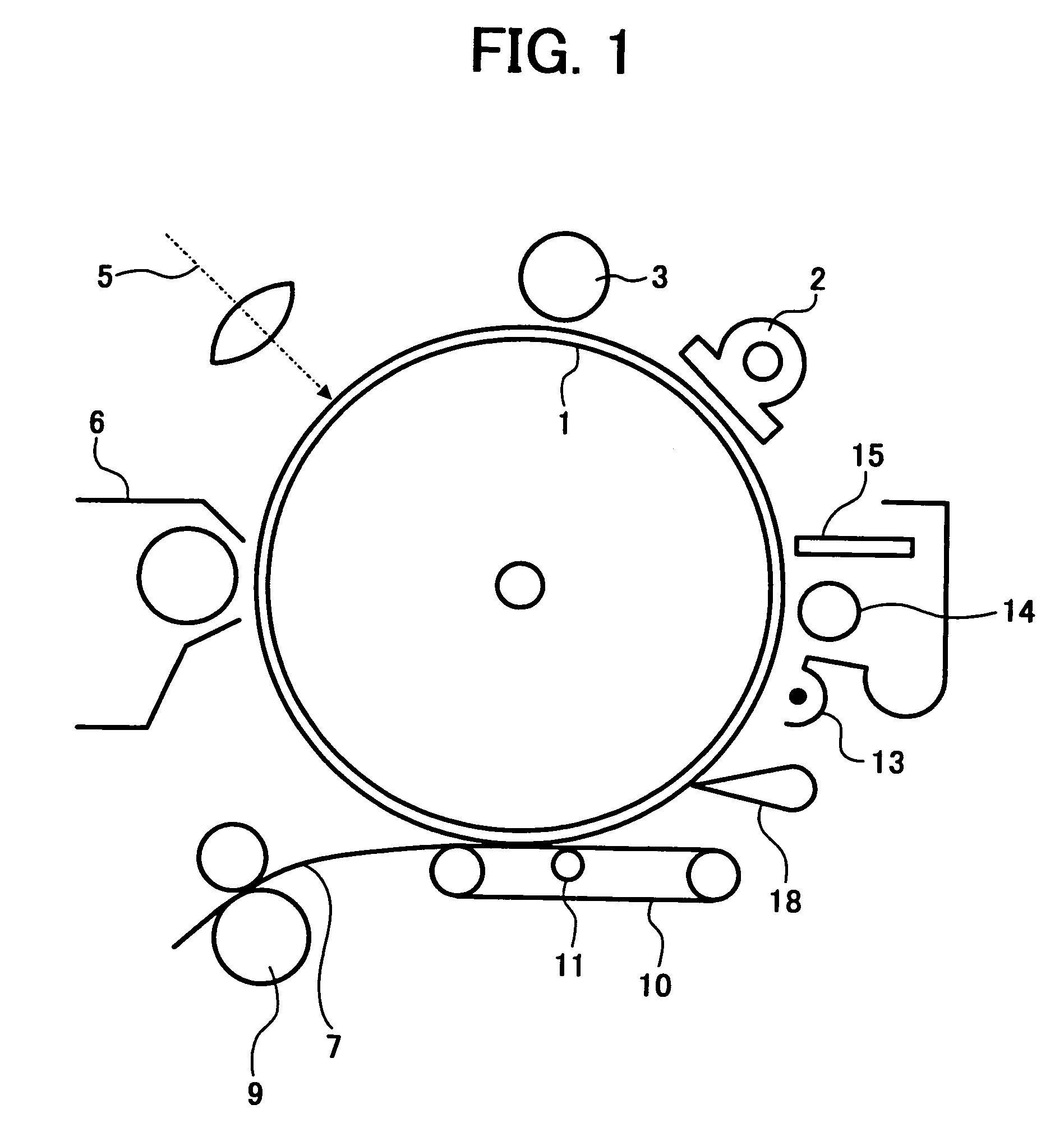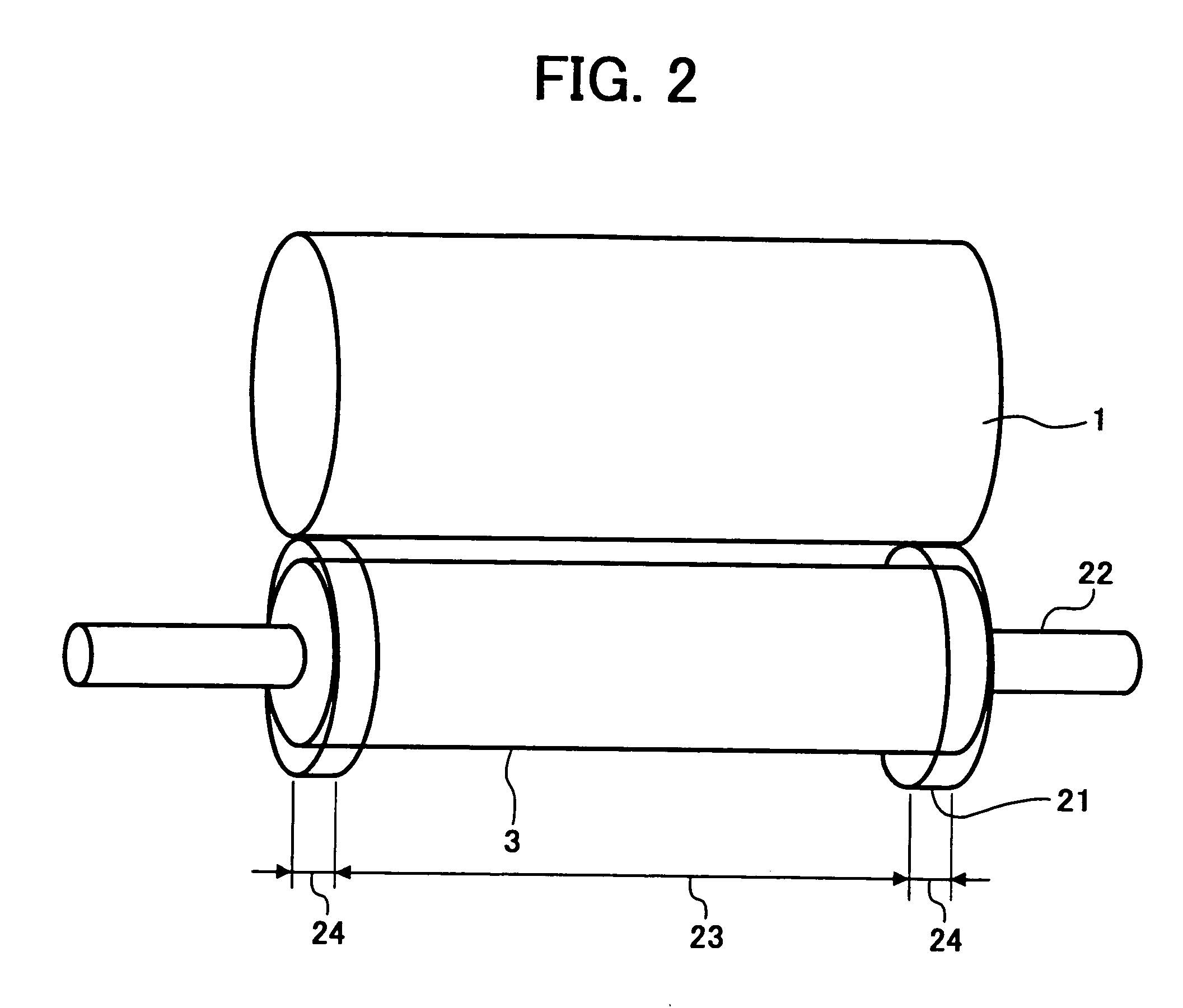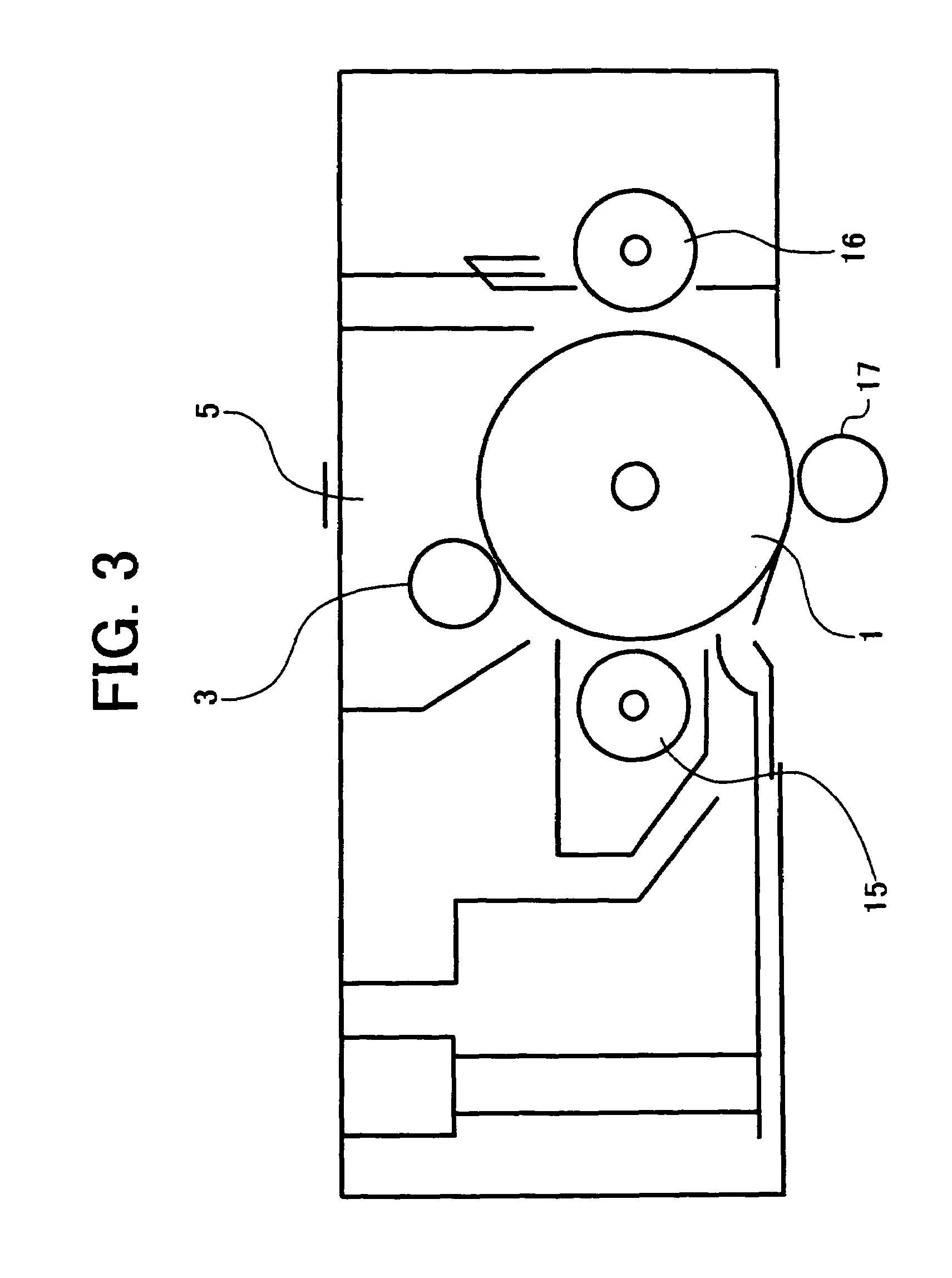Electrophotographic image forming apparatus
- Summary
- Abstract
- Description
- Claims
- Application Information
AI Technical Summary
Benefits of technology
Problems solved by technology
Method used
Image
Examples
synthesis example 1
[0174]29.2 g of 1,3-diiminoisoindoline and 200 ml of sulfolane were mixed, and 20.4 g of titaniumtetrabutoxide were dropped into the mixture under a nitrogen gas stream. The mixture was gradually heated until the mixture had a temperature of 180° C. and was stirred for 5 hrs while the reaction temperature was maintained from 170 to 180° C. After the mixture was cooled, a precipitated material (powder) was filtered and washed with chloroform until the powder became blue. Next, the powder was washed with methanol several times, and further washed with hot water having a temperature of 80° C. several times to provide a crude titanylphthalocyanine pigment. The crude titanylphthalocyanine pigment was mixed in concentrated sulfonic acid which was present in an amount of 20 times as much as the amount of crude titanylphthalocyanine pigment and stirred to dissolve the pigment therein. The mixture was then dropped in ice water, which was present in an amount of 100 times as much as the mixtu...
synthesis example 2
[0184]A pigment was prepared in accordance with the method disclosed in Example 1 in Japanese Laid-Open Patent Publication No. 1-299874 (Japanese patent No. 2512081). Namely, the wet cake prepared in Synthesis Example 1 was dried and 1 g of the dried material was included in 50 g of polyethylene glycol. The mixture was dispersed by a sand mill for 1 hr with 100 g of glass beads. After the crystal conversion, the dispersed material was washed with a diluted sulfuric acid and an aqueous solution of ammonium hydroxide in this order, and dried to provide a pigment. This is Pigment 7.
synthesis example 3
[0185]A pigment was prepared in accordance with the method disclosed in Production Example 1 in Japanese Laid-Open Patent Publication No. 3-269064 (Japanese Patent No. 258468). Namely, the wet cake prepared in Synthesis Example 1 was dried, and after 1 g of the dried material was stirred in a mixed solvent of 10 g of ion exchange water and 1 g of monochlorobenzene for 1 hr at 50° C., the mixture was washed with methanol and ion exchange water and dried to provide a pigment.
PUM
 Login to View More
Login to View More Abstract
Description
Claims
Application Information
 Login to View More
Login to View More - R&D
- Intellectual Property
- Life Sciences
- Materials
- Tech Scout
- Unparalleled Data Quality
- Higher Quality Content
- 60% Fewer Hallucinations
Browse by: Latest US Patents, China's latest patents, Technical Efficacy Thesaurus, Application Domain, Technology Topic, Popular Technical Reports.
© 2025 PatSnap. All rights reserved.Legal|Privacy policy|Modern Slavery Act Transparency Statement|Sitemap|About US| Contact US: help@patsnap.com



